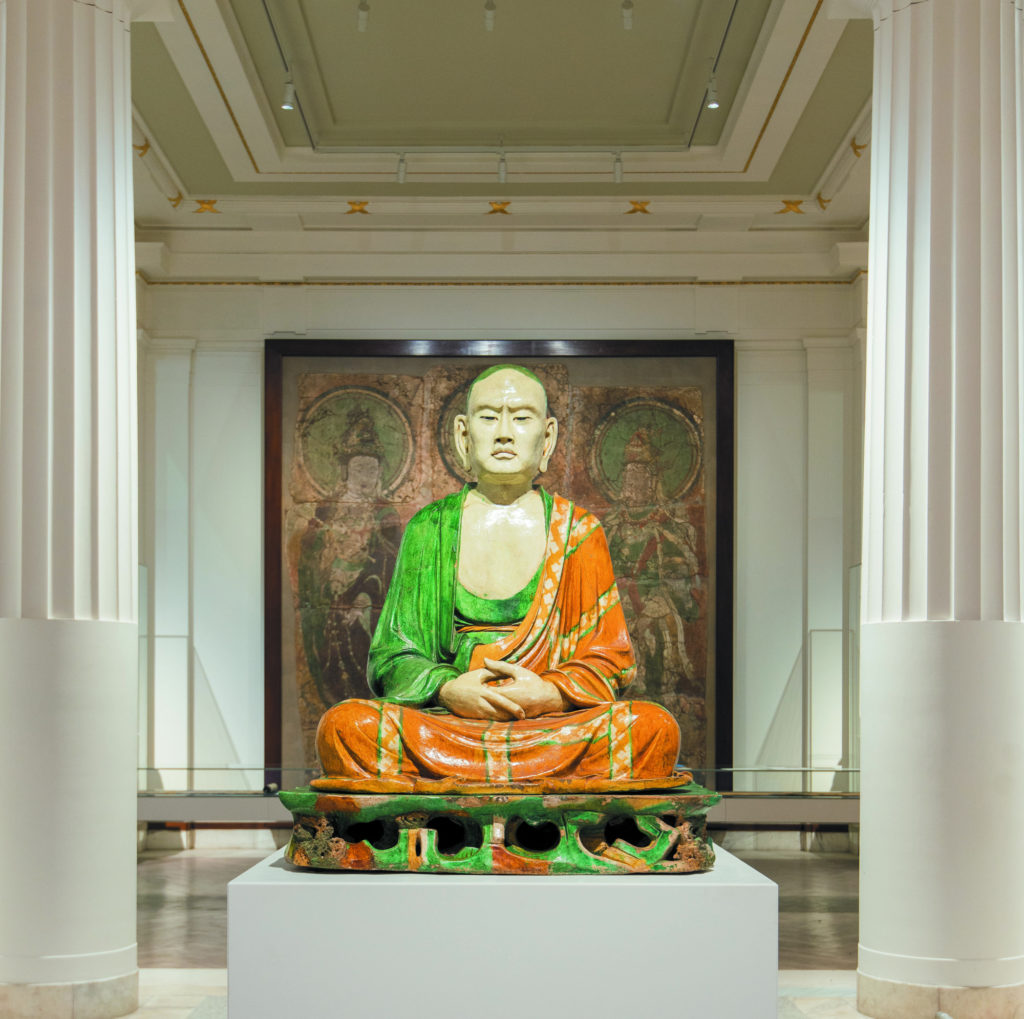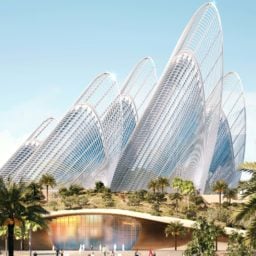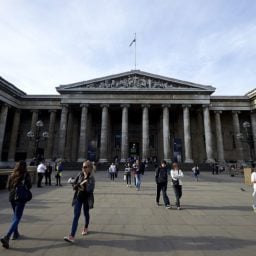The Queen officially opened the British Museum’s Gallery of China and South Asia in early November in the presence of its benefactor, the Hong Kong- and London-based businessman, philanthropist, and former museum trustee Joseph Hotung. But it wasn’t until this past weekend that the public finally got to see the full reveal of the spectacularly revamped space.
Formerly the Sir Joseph Hotung Gallery of Oriental Antiquities, the redesigned and renamed gallery runs the length of the museum building above its north entrance in Bloomsbury. The name change is significant for the British Museum: Its director, Hartwig Fischer, plans to comprehensively redisplay the museum’s galleries, bringing many up to the present day and connecting to a much wider public at home and from abroad. Starting with China and India sends out a strong message, on the one hand to the increasing number of Chinese tourists to London and on the other, to the many British descendants of the Indian and Pakistani diaspora.
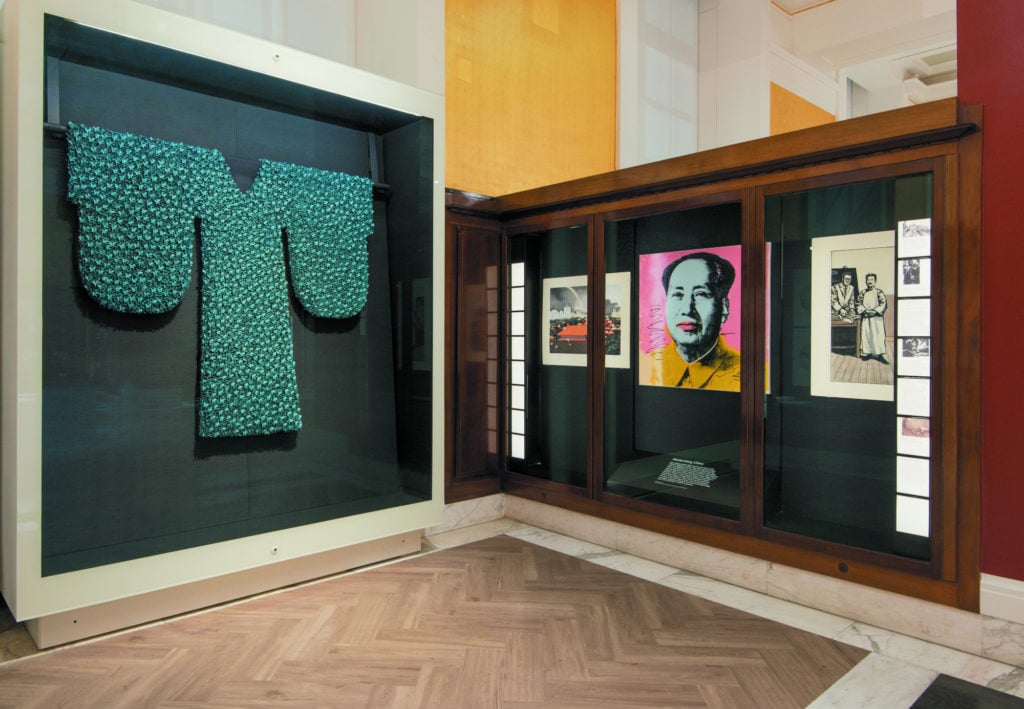
Warhol’s Mao joins Caroline Yi Cheng’s Peacock dress among contemporary works on display. ©The British Museum.
The gallery’s delayed opening was due to the logistics of installing around 2,000 objects, ranging from architectural fragments and large sculptures to light-sensitive painted scrolls and silks. Textiles and works-on-paper are new arrivals in the space, which has many tall windows, and so improvements were needed to its light controls. The budget of the new-look Sir Joseph Hotung Gallery was in the “several millions,” a museum spokeswoman says.
Half of the space is devoted to China and half to what the museum refers to as South Asia—actually the Indian subcontinent, or modern-day India, Pakistan, Bangladesh, and Sri Lanka. (The museum tiptoes around disputed borders in the region. A map in the gallery comes with a caveat: “The names shown and the designations used… do not imply official endorsement or acceptance by the British Museum.”)
Contemporary works in the Chinese half of the space include an Andy Warhol print of Mao, which is a promised gift, in a section about modern China. This is shown alongside a spectacular “ceramic sculpture” by the British-born artist Caroline Yi Cheng. She has donated the work Peacock (2012) from her “Mandarin Butterfly Series,” which recalls a traditional garment covered in thousands of porcelain butterflies made by artisans in China. New acquisitions in the South Asia displays include a sitar that belonged to the musician Ravi Shankar, which has been donated by his daughter, Anoushka.
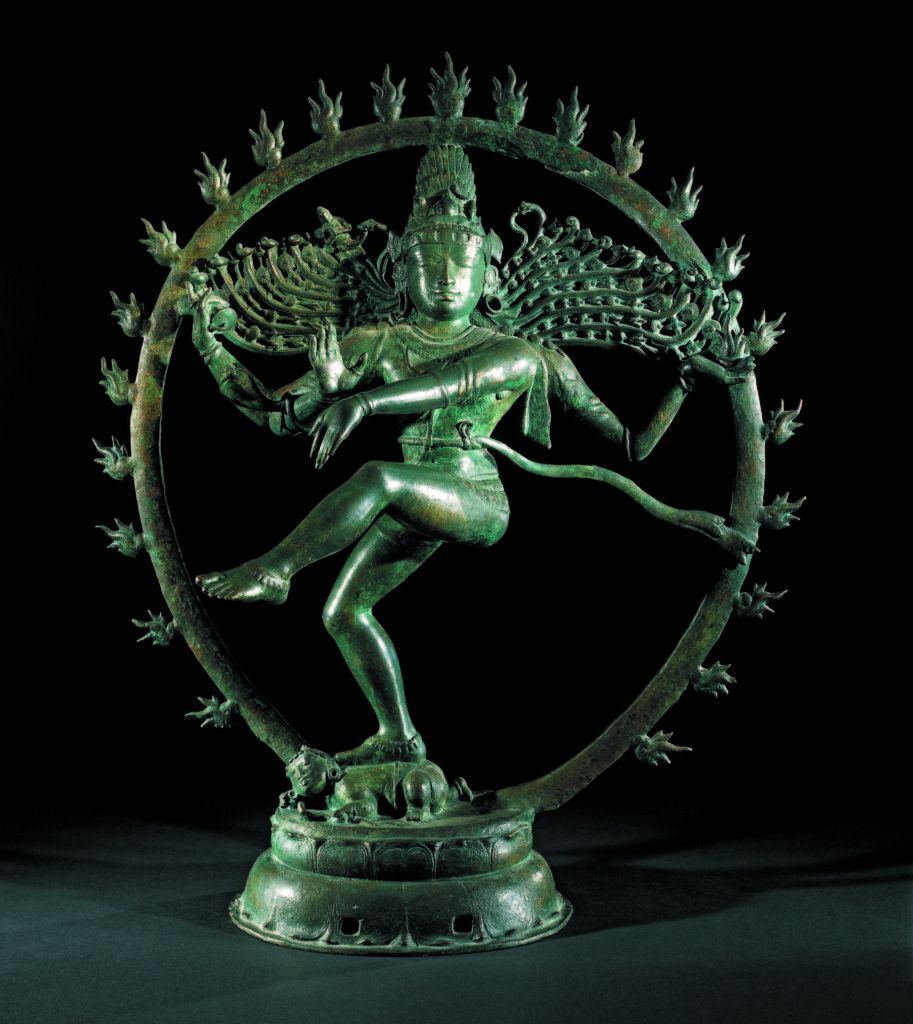
Shiva Nataraja, Lord of the Dance. Chola Dynasty, South India. © The British Museum.
Jane Portal, the keeper of the department of Asia, praised Hotung’s long-term support of the British Museum. The first gallery named after the former museum trustee opened exactly 25 years ago. “This new gallery is the first step,” she says. “Next are the Japanese Galleries, supported by Mitsubishi, and the Islamic Gallery.” The Japanese Galleries are due to close on January 1 and reopen in September, 2018.
The all-new Islamic gallery is due to open a month later in October 2018. It is funded by the Malaysian businessman Syed Mokhtar Albukhary and will be called the Albukhary Foundation Gallery of the Islamic World. Civilizations ranging from North Africa, Turkey, and the Middle East to South and South-East Asia will be represented in the new galleries, which will be formed by joining Rooms 42-45 on the first floor of the museum. Many more Mughal-era works from India, including paintings and calligraphy, are destined for the Islamic galleries than are now in the new South Asia room.
“With the Percival David collection of ceramics and Sir Joseph Hotung’s jade collection, the British Museum has one of the best collections of Chinese art outside of China and Taipei,” Portal says. A gallery of Hotung’s jade works complements the main gallery that bears his name.
Portal and her colleagues at the British Museum are also having to juggle the logistics of packing up the vast collections stored in Blythe House in west London ahead of the building’s sale. Asian artifacts are due to come to Bloomsbury and be rehoused in the basement of the World Conservation and Exhibitions Centre, a £135 million wing that opened in 2014 and is, handily, a short walk from the Hotung gallery.
